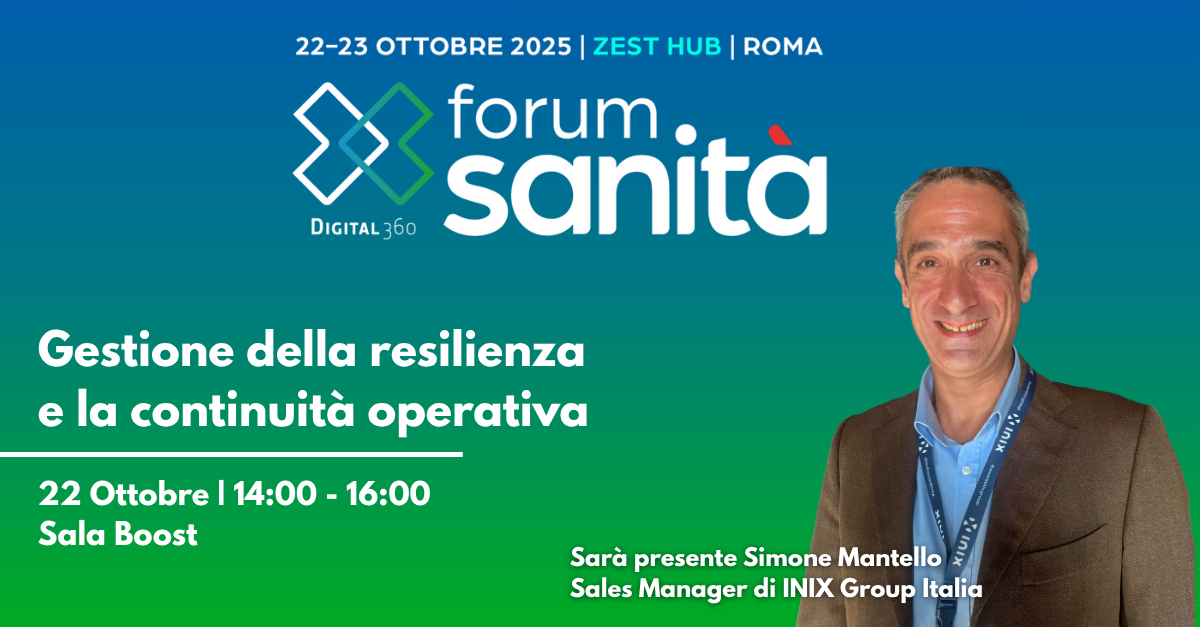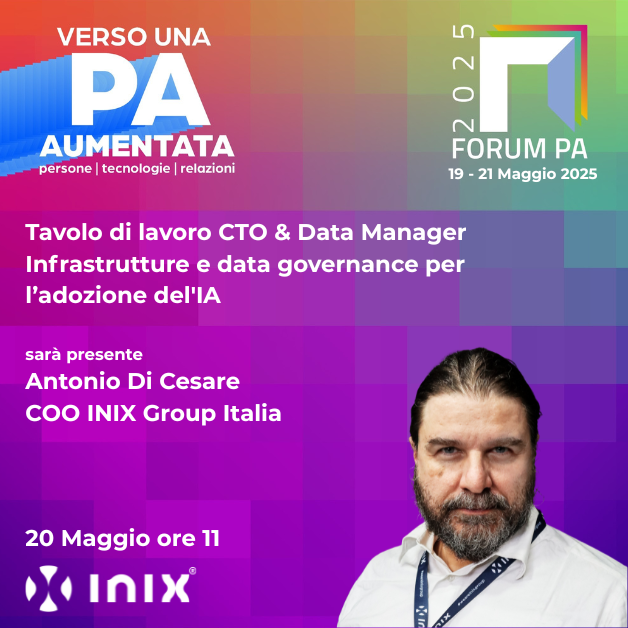
Cloud Regulation for Public Administration: Key Updates and How Verification Processes Are Changing
- Redazione
Nel mondo della sanità, la sicurezza informatica non è più un tema tecnico, ma una condizione indispensabile per la tutela dei pazienti e la continuità dei servizi. Simone Mantello, Sales Manager di INIX Group, nell’intervista rilasciata a ForumPA, ha evidenziato come la cybersecurity sia ormai un pilastro strategico e non un semplice obbligo normativo.
Secondo Simone Mantello, la conformità alle linee guida dell’Agenzia per la Cybersicurezza Nazionale e alla direttiva europea NIS2 rappresenta il punto di partenza per costruire un sistema realmente resiliente. Non si tratta solo di rispettare regole, ma di definire processi, responsabilità e strumenti che garantiscano la capacità di reagire e riprendere rapidamente le attività in caso di incidente informatico.
Il settore sanitario, per la quantità e la sensibilità dei dati trattati, è oggi uno dei bersagli principali della criminalità digitale. Gli attacchi ransomware, in particolare, mettono a rischio non solo i sistemi informativi, ma la stessa operatività degli ospedali. Per questo, sottolinea Simone Mantello, è necessario adottare un approccio proattivo basato sul monitoraggio costante, sui test di vulnerabilità periodici e su una gestione organizzata degli incidenti.
Ma la tecnologia, da sola, non basta. Il vero fattore decisivo resta l’essere umano. Formazione e consapevolezza del personale, insieme alla creazione di team interni dedicati alla gestione delle crisi, sono elementi essenziali per costruire una cultura della sicurezza diffusa. Solo coinvolgendo tutti i reparti, dai tecnici ai dirigenti, è possibile affrontare in modo coordinato un evento critico e ridurne l’impatto operativo.
INIX Group, spiega Simone Mantello, supporta le strutture sanitarie in questo percorso, accompagnandole nella valutazione dei rischi, nel monitoraggio continuo e nell’adozione di tecnologie innovative, anche basate su intelligenza artificiale. La missione è chiara: garantire la protezione dei dati e la continuità dei servizi, trasformando la cybersecurity da costo a valore.
La sfida è culturale prima ancora che tecnologica. Solo passando da un approccio reattivo a una strategia strutturata e proattiva sarà possibile costruire una sanità realmente digitale e sicura. In questo scenario, le parole chiave sono tre: conformità, resilienza e formazione.


Intelligenza Artificiale e Pubblica Amministrazione: Sfide, Opportunità e la Necessità di un Ecosistema Tecnologico Nazionale. Durante la seconda giornata di
